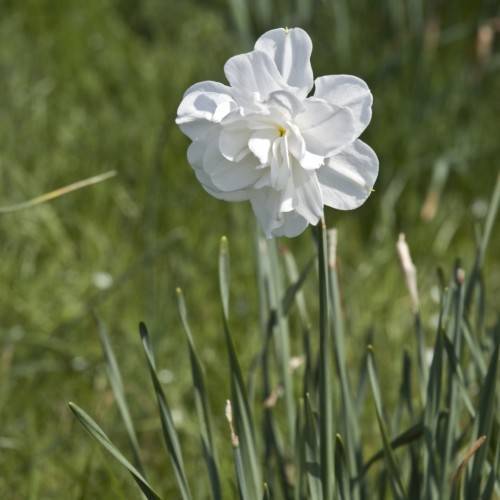
double daffodil
Narcissus 'Gay Song'
Cycle:
Perennial
Watering:
Average
Hardiness Zone:
3 - 8
Flowers:
Flowers In Spring
Sun:
Full sun,part shade
Growth Rate:
High
Maintenance:
Low
Salt Tolerant:
Yes
Care Level:
Medium
watering
Double daffodil, also known as Narcissus 'Gay Song', likes moist but well-drained soil that is slightly acidic or neutral, so water it regularly rather than waiting until the soil has completely dried out. It should be watered when the top inch of soil feels dry to the touch. Water deeply and thoroughly so that the water reaches the plant’s roots. Aim for an inch or 2 of water per week, adjusting for seasonal weather variations such as increased heat and sunlight in the summer and cooler, wetter conditions in the winter.
sunlight
Double Daffodil (Narcissus 'Gay Song') requires plenty of sunlight for best performance. This plant will be happiest in full sun, so it should receive at least 6-8 hours of direct sunlight each day. It prefers to be planted in an area with some protective shade during the midday hours when the sun is most intense, to avoid wilting and burning. During spring and late summer, when the days are longer, the plant can handle a full day of direct sunlight, which helps promote more vibrant blooms. In the winter months, however, the plant should be kept in a place that doesn't receive too much sunlight as it may cause the flowers to fade.
pruning
The amount of pruning required for the double daffodil (Narcissus 'Gay Song') depends on how it is being used. If it is being grown as a cut flower, the flowers and foliage should be cut when the flowers begin to fade to ensure strong rebloom in the future. If the daffodil is being grown in a border, the foliage can be left in place until it turns yellow and begins to die back, typically a few months after the bloom period. This will allow the plant to store up sufficient energy to allow it to rebloom in the following season. Deadheading the spent blooms to allow for new growth can also be beneficial. Whichever approach is taken, it is important to ensure that all foliage has been removed from the area before the growing season begins so that the plant can focus its energy on new growth and flowering.
